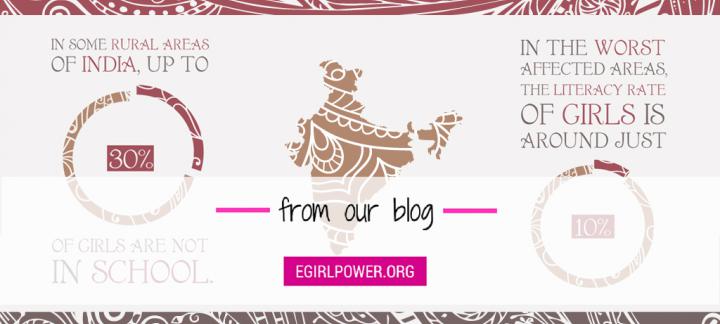Why 29 Percent of Girls in India Stop Going to School
Significant changes have occurred in India over the past several years regarding the life of young girls. In 2009, the World Bank upgraded India’s status from a poor country to a middle income country, citing significant economic improvements. In that same year, the ‘Rights to an Education’ Act passed and granted all children from the age of 6 to 14 a free education. Many advancements have been made in the economy and education, so why are India’s girls still continuing to struggle?
One major reason for this struggle is that even though a primary education is now free and provided, it is not mandatory. Meaning, for whatever the reason, you are allowed to drop out. And that is exactly what happens. Enrollment rates are 98% for girls from the onset, but over the years about 29% of them will drop out to either contribute to their households or to get married, as a staggering 47% of girls get married below the age of 18. And because of the unsanitary conditions and the lack of quality in the education provided, many parents will voluntarily pull their young girls out of school, as they feel it has no benefit.
Also, in India, traditional views surrounding women’s education still reign supreme. Whereas economically the country is beginning to thrive more than they ever have, only 3.7% of the GDP is allocated to education. India still has not seen the major benefit an education gives its citizens. It is more of a political issue than economic. India still views women in a very narrow light, assuming that all of their duties should benefit or take place within the household. Even though women earning an education not only help their families, it also their community and ultimately, the nation.
Lastly, even though passing an act to grant free education is a huge step in the right direction, the major misstep here is the quality. The conditions are unsanitary, many of the instructors are not qualified or end up quitting, and that’s if they are even present, because they have 70 plus pupils per classroom. Some classrooms do not have enough desks, so children are sitting on the floor. These unsatisfactory conditions contribute to children not learning or being disengaged. Many of the schools are located in urban areas, leaving rural children with a lack of options or traveling very long distances to attend school.
While improvements have been made in terms of education in India, girls are still facing significant challenges. They are still plagued by traditional views, and the education provided is not mandatory nor ideal. Education in India needs to be seen as not just a right that children and girls can partake in but an absolute necessity.
Help eGirl Power fight gender inequality and change the future of hundreds of girls in need through education. Donate now.


